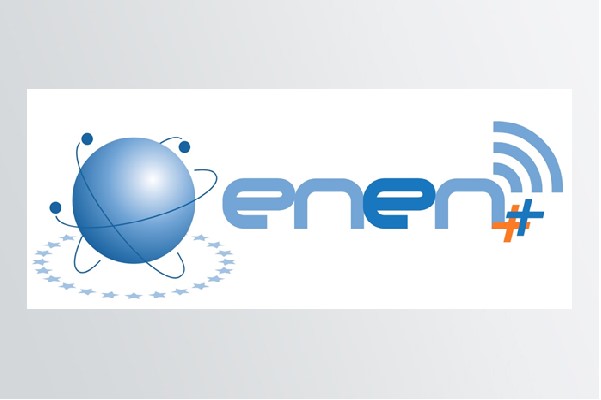UNIVERSIDAD POLITECNICA DE MADRID
(UPM, MADRID, SPAIN)
Teaching Institution: Universidad Politécnica de Madrid, School of Industrial Engineering, Master en Ciencia y Tecnología Nuclear
Research Institution: Universidad Politécnica de Madrid, Nuclear Engineering Departament
Address: José Gutierrez Abascal 2, 28006 Madrid, Spain
Contacts for ENEN Purposes:
UNIVERSIDAD POLITÉCNICA DE MADRID-UPM (www.upm.es)
The Technical University of Madrid (UPM, Universidad Politécnica de Madrid) is the oldest and largest of the Spanish Technical Universities. It consists of twenty Schools plus two Faculties that cover most engineering disciplines as well as Architecture and Sports Science. UPM has more than 3,000 faculty members, around 38,000 undergraduate students, and around 8,000 graduate and doctoral students. About 5,000 students graduate every year from UPM. The University’s main goals are higher education and research. To achieve these goals, the Schools and Faculties deal with teaching whereas research groups (201), specialized technical centres (5), and university institutes (5) are devoted to research. UPM enjoys a high participation in EU-funded projects. In fact, it has had the highest participation among European universities in FP4, FP5 and FP6. In particular, the University has signed more than 500 R&D projects within FP6, 125 of which still remain active.
In the style of the french Grandes Écoles, UPM is made up of 20 schools dealing with the different areas of technology. Twelve of them are Advanced Technical Schools awarding engineering degrees of either five or six years duration, and the rest are Technical Schools which award three years study degrees. UPM’s Schools cover most engineering disciplines, including Aeronautical, Agronomical, Chemical, Civil, Electrical, Electronic, Forestry, Industrial, Mechanical, Mining, Geology, Energy and Naval Engineering, as well as Architecture, Computer Science, Design of Fashion and Geodesy & Cartography. In addition, UPM includes a Center for Physical Education and Sports.
Although UPM is a young university, having been founded only in 1971, most of its Schools are over a hundred years old, dating back to the 18th and 19th centuries and existing independently until they were grouped together as UPM. It is not an exaggeration to say that much of the history of Spanish technology for over one and half centuries was written by the Schools of Architecture and Engineering of this university, as for many years some of them were the only Technical Schools in existence in their fields in Spain. Almost all the leading Spanish educators and researchers have been involved with UPM either as students, teachers, or both.
Most of the UPM schools are located in the urban district of Madrid, at the Madrid University Campus, although some of them of more recent creation are spread throughout the metropolitan area. UPM offers 3 and 5/6 years degree-programs, covering all engineering areas and architecture. Graduate courses adapted to industrial needs are also offered which include both doctoral programs and postgraduate courses. UPM graduates around 5,000 students every year, of whom 20% have participated in international mobility programs and have been trained in companies. There are more than 2,000 students enrolled in doctoral programs, and each year 200 of them attain their Ph.D degree.
International Relations
UPM maintains that international education is an excellent way to open minds to other ways of living and working. It therefore gives high importance to international education in the belief that future peace and prosperity depend on the ability for people to integrate and work in a multi-cultural environment.
As a result UPM has international student exchanges with over 400 universities and higher education Centers in Europe and other parts of the world. Every academic year close to a thousand UPM students study abroad and a similar number of foreign students study at UPM. In some of UPM Schools almost 50% of the students already have an average of two semesters international experience in their careers. It is the goal of UPM to foster and further expand this international experience.
Toward this end, UPM has also signed over sixty Double Degree Agreements with different foreign universities. Students follow the last three or four semesters of their studies in a foireign university and in exchange receive two degrees, one from UPM and another from the foreign university.
In addition, UPM has an active role in the recent European Union Erasmus Mundus program, leading two Erasmus Mundus master network and participating in five more. For cultural and historical reasons, UPM has especially strong relations with Latin American universities. Apart from many other activities, UPM has some thirty Ph.D. programs in cooperation with Latin America universities. UPM is also leading Magalhães, a new network developing an Erasmus-like program of engineering student exchanges between the European Union and Latin America and the Caribbean. UPM in an active member of numerous international associations of universities and Centers of higher education including CESAER, TIME, EUA, Athens, EAIE, SEFI, GE4, IAU, LACCEI, EuroPace, and Conference des Grandes Écoles. Apart from Europe and Latin America, UPM is opening important links with other relevant regions such as Asia and USA.
Europe: UPM has 381 bilateral agreements and 80 double degree agreements with prestigious European universities, and is a member of the major European university networks: EUA, CESAER, SEFI, EUCEN, Magalhães, IAU, Compostela Group and TIME. Moreover, UPM is the European university participating in the largest number of Masters Courses in the Erasmus Mundus Program (seven Masters Courses).
Latin America: Due to common language and historical reasons, Spain has always played a pivotal role in this area. Additionally, there is a growing trend among these countries to increase their interests in European technical institutions. UPM has 300 teaching and research bilateral agreements signed with different Latin American institutions, 107 of which are currently active. Every year UPM funds from its own budget between 40 and 50 projects to cooperate with Latin American and Caribbean institutions. The University is also a full member of the major LAC technological university associations (LACCEI, ASIBEI, HACU, Tordesillas Group, etc.). As for its experience in the organization of international events, recent general meetings such as the CESAER General Assembly in 2003, the LACCEI Conference 2005, and the Magalhães network foundation meeting have been held at UPM’s premises.
Asia: For the last two years, UPM has set up a fruitful cooperation with some of the most prestigious Chinese universities. In fact, UPM has exchanged over 40 students bilaterally, all of whom have benefitted from a scholarship awarded by UPM programs. UPM offers Chinese language courses for Spanish students interested in participating in this exchange program. On the other hand, UPM has also established initial relations with some Middle Eastern countries.
USA and Canada: Both double-degree and shorter-stay agreements with North American institutions have increased in the last few years. In particular UPM has four double-degree programs with the USA.
Research
UPM has a strong commitment to R&D and Innovation. Of a total annual budget of around 360 million euro, UPM receives annually over 100 million euro support from external sources (research, consultancy, validation and certification, and others), clearly indicating its scientific and technological capabilities. 20% of external support comes from international sources. Participation in competitive European and national R&D programs provides 40% of the sponsored research funds, and research services and contracts with the industrial sector supply the rest.
UPM ranks first among Spanish universities in European Union R&D funding, having around 15% of the total number of European Union funded projects such as FP (Framework Program), EUREKA and ESA (European Space Agency). Its participation in FP6 is strongly focused on the IST (Information and Society Technology) program, which represents around half of the funded projects. In addition, UPM has implemented an entrepreneurship program to promote the creation of spin-off companies. Nineteen spin-offs have been created in the period 2002-2004.
The contribution of the university to knowledge creation through its scientific publications is also significant. Most relevant is the high number of papers published in scientific journals and presented at conferences. The annual average figures are 1,200 journal papers,2,00 0 conference communications and 200 Ph.D. theses.
Most research is carried out within academic departments in research groups made up of faculty, graduate students, staff and technicians. Excellent research groups can be found in several domains such as materials science, biotechnology, telematics, software engineering,
energy, robotics and industrial organization. These research groups make use of sophisticated equipment and facilities and they are experienced in applied research and technology transfer.
In addition, UPM has other different structures to handle research which complement the department units. Institutes, Centers and Laboratories, most of them well known in their areas of expertise, count on state-of-the-art facilities and provide key technical support to industry, both nationally and internationally. Some of the specialized R&D and technological innovation units at UPM are: Automobile Research Institute, Institute of Nuclear Fusion, Institute of Solar Energy, Institute for Systems based on Opto and Microelectronics, Institute for Microgravity, Institute of Biotechnology and Plant Genomics, Research Center for Transport, Center for Smart Homes, and Laser Center.
SCHOOL OF INDUSTRIAL ENGINEERING – ETSII (www.etsii.upm.es)
The School of Industrial Engineering was started in 1850.
TheBatchelor degrees are:
– Industrial Engineering ( 5 years), with specializations in:
1. Control and Electronic Engineering
2. Electrical Engineering
3. Construction Engineering
4. Mechanical Engineering
5. Metallurgical Engineering
6. Management Engineering
7. Chemical Engineering
8. Power Engineering
– Chemical Engineering (5 years)
– Control and Electronic Engineering (post-grad degree,2 years)
– Management Engineering (post-grad degree, 2 years)
NUCLEAR ENGINEERING DEPARTMENT (www.din.upm.es)
It has been active for more than 25 years in the research and teaching of Nuclear Science and Engineering for sustainable, safe and economical fission and fusion nuclear energy and related applications; focusing its research and development activities on advanced, detailed and comprehensive computational systems for reactor physics, design of core and fuel assemblies or capsules, reactor operation support by predictive and online simulation, coupled multi-physics transient and safety analysis, material damage and activation analysis, and nuclear system integration (LWR, FBR, HTR, transmutation systems and ICF reactors). The DIN/UPM is an active partner in the following research projects or actions of the EU-EC FP5 or FP6: CRISSUES, NURESIM, EUROTRANS, PERFECT and ENFTP-SSA, as well as in the ENEN, NEPTUNO and ERASMUS-MUNDUS-Nuclear academic projects and networks.
DEGREE COURSES RELATED TO NUCLEAR ENGINEERING 2007-2008
– BATCHELOR DEGREE in Power Engineering (Técnicas Energéticas)
– MASTER in Nuclear Science and Technology: information-on-master-degree-upm
– PhD courses in Nuclear Science and Technology (Ciencia y Tecnología Nuclear)
– ENEN EXCHANGE COURSES


